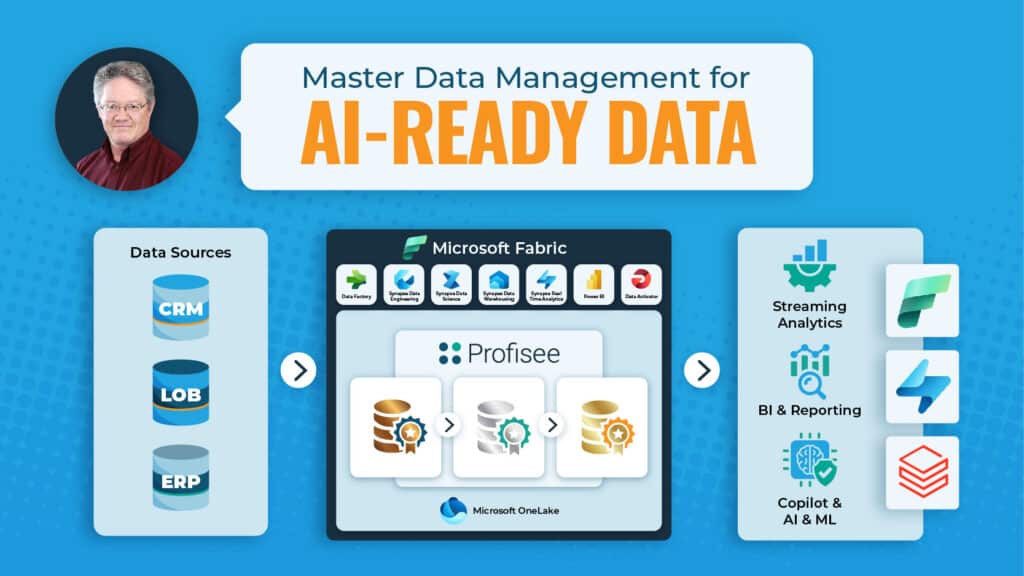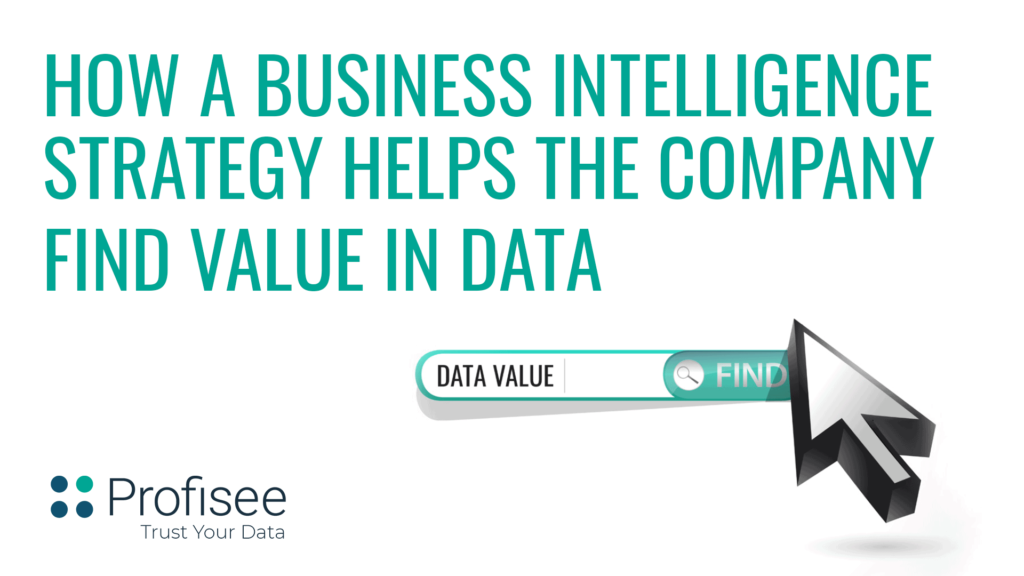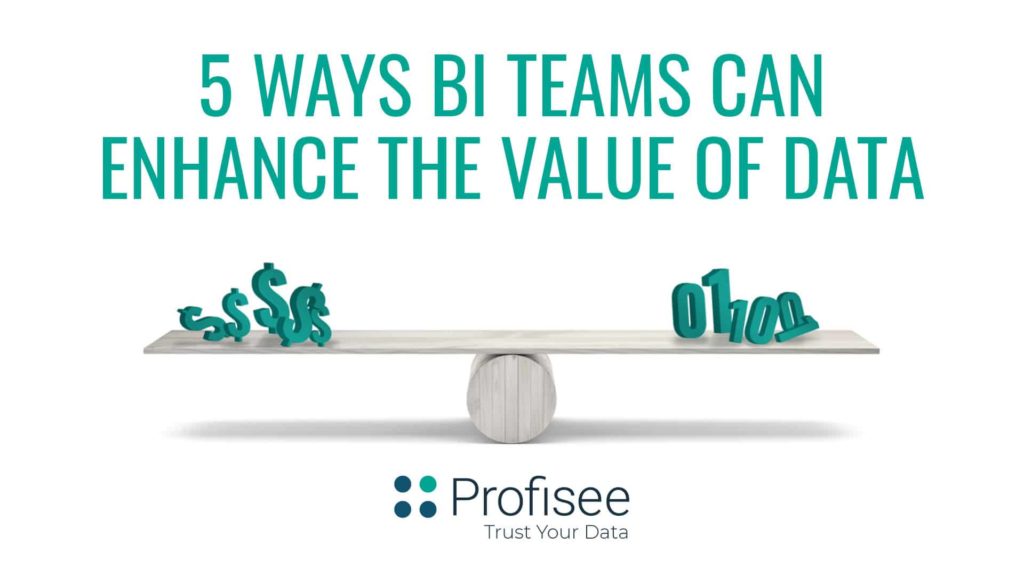For business intelligence to produce reliable results, you need high-quality data.
Think of business intelligence (BI) as a GPS in a jet. Appropriately configured, you can find your current location at a glance. You can also tell how far you have traveled, how long to your destination and make informed decisions about the rest of the journey. However, the GPS device in the jet alone is not enough, it relies on a vast infrastructure to carry out its work. Without an array of supporting GPS satellites and software, you will not be able to get all the value a GPS offers. Master data is the key component in the infrastructure for all the business applications in your company (think BI, ERP, CRM and other various product, employee and customer data software you use). Master data is the foundation your business needs for business intelligence to succeed.
Let’s review four ways to use master data management (MDM) to clean, organize and manage your data so that you can produce consistent, trustworthy results in your BI program.
1. Find out if your data quality is robust enough for a big data analytics project
Big data enthusiasts sometimes talk about their work like it’s magic. If you can just add in enough data sets, you will eventually get new insights. Sheer volume of data does not produce meaningful results. You need a foundation of data quality in place first. Improving data quality doesn’t have to involve manual review. You can use master data management instead.
Your starting point with MDM business intelligence lies in analyzing your data quality. You may find out that your marketing data – produced by half a dozen systems – is just not ready for analysis. In contrast, your tightly controlled financial data is clean and prepared for analysis. Armed with that insight, you can move ahead with analytics work on finance right now while working with marketing to improve the quality of their data for future analysis.
What if you find some serious data quality problems? The problems may even
feel overwhelming.
Protip: The answer lies in identifying quick wins to improve data quality. Find out how MDM plays a role in that improvement next.
2. Solve time consuming data quality problems with MDM
What happens when an organization has bad address data? You waste money and irritate customers. Harvard Business Review found that bad data costs the US economy more than $3 trillion a year. How much of that loss applies
to your organization’s activities?
With master data management, you can cleanse address data in a few ways. At the most basic level, you will be forced to answer fundamental data questions.
- Who is responsible for maintaining it?
- Who will speak up to challenge poor data management practices?
- How do you resolve data quality conflicts?
- Who has the final say on naming conventions and definitions?
Once those questions are answered, you can leverage tools for a quick win. Profisee’s Golden Record Management (GRM) engine makes this happen. Start by eliminating duplicates – one of the most costly failures in data. Next, you can verify and geocode your data. This improvement is one of the easiest ways to improve data quality and customer service.
You may believe that your data quality is good enough. However, others might challenge your view and pull you into side debates about data quality.
Let’s address that next.
3. Improve productivity: End time wasting debates over data quality
Does this sound familiar? You present a business case to your executives for consolidating duplicate locations using a fresh data extract from your business intelligence tool. Then a colleague in the Real Estate group presents different data. Before you know it, the executive team is confused by reports using conflicting data sources from different applications. Bottom line: there will be delays and mistrust about moving forward with a project where no one feels confident with the data. Unfortunately, this sometimes leads to the executive team questioning whether all of these data projects and analytics are worthwhile if you constantly end up debating data definitions and quality rather than business needs.
Take one of the most common data debates – developing a single view of the customer. When data definitions and quality disagree, you can’t profile or describe your customer base properly. Master data management can end these debates. Armed with a robust view of the customer, you will be able to make better informed decisions. Ultimately, you will have more time and resources to do value-added analytics (“what if we expanded to the East Coast?”). That’s how business intelligence and master data management work together and add business value.
How do you get a broad perspective in your data analytics? You need to raise data awareness and engagement across the organization.
4. Generate more data questions and project ideas by raising data awareness. Raise data awareness throughout the organization
Raising awareness? No, we’re not talking about politics. We’re talking about the fundamental realities of building successful internal data management practices. Your data and analytics staff need ideas and suggestions from others in the organization.
For example, front line employees who update customer and/or product information when providing customer service may suggest ways to improve data quality by improving form inputs. By increasing data participation from across the organization, there are two benefits. First, your will gain new project ideas and questions to investigate. Second, you will build more support for data projects and programs. As a result, getting funding and other support for data projects will be easier in the future.
Here’s what this concept looks like in practice.
- Sell the vision of data management. Your case may focus on cost reduction, customer service improvement or innovation. For the best results, focus your data vision on a single clear benefit.
- Host lunch and learn sessions. This tried, and true tactic works. If you want people to show up, spend at least 20 minutes brainstorming different titles for the session. A good event name will significantly boost turnout. We recommend hosting one session with an internal focus and one about industry trends. Sometimes the best ideas come from outside your industry. Running a session focused on how a competitor is achieving success with data analytics will help you to generate competitive enthusiasm for your data projects.
- Run a pilot experiment. Data on its own does nothing. Instead, show others how you can ask and answer better questions.
Your Next Step
Start by creating a baseline for your data quality for your most important data sets. If you’re unsure where to start, we recommend focusing on customer data. The single best way to improve your data quality lies in leveraging master data management. MDM business intelligence gives you the ability to scale improvements to data quality rather than slogging through manual fixes here and there. Instead of debating data definitions over and over again, you will be able to produce clean, reliable analytics based on a strong master data foundation.

Forrest Brown
Forrest Brown is the Content Marketing Manager at Profisee and has been writing about B2B tech for eight years, spanning software categories like project management, enterprise resource planning (ERP) and now master data management (MDM). When he's not at work, Forrest enjoys playing music, writing and exploring the Atlanta food scene.











